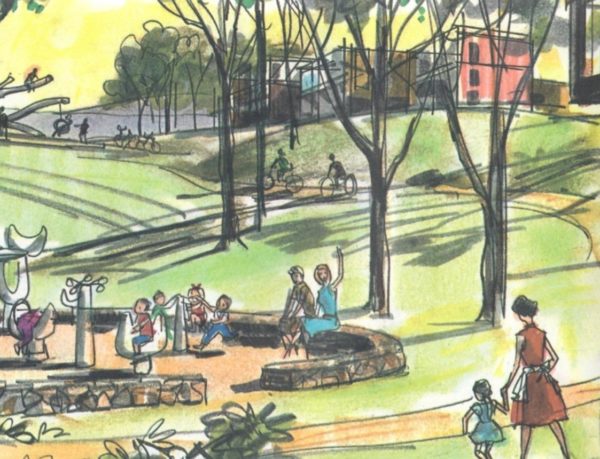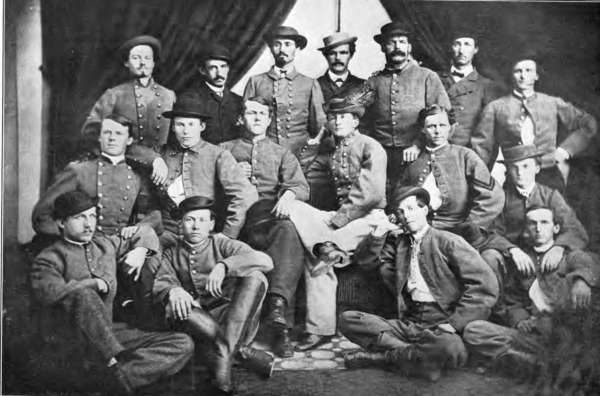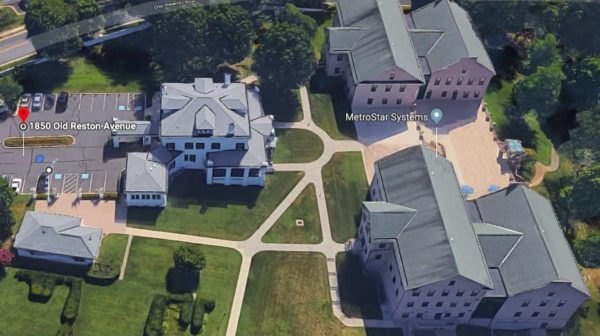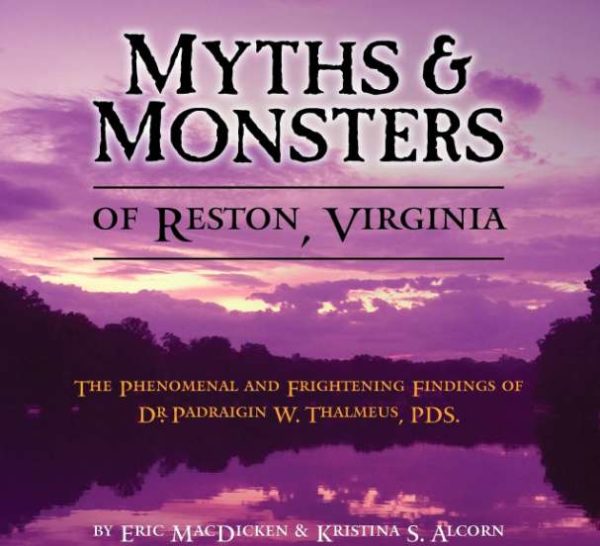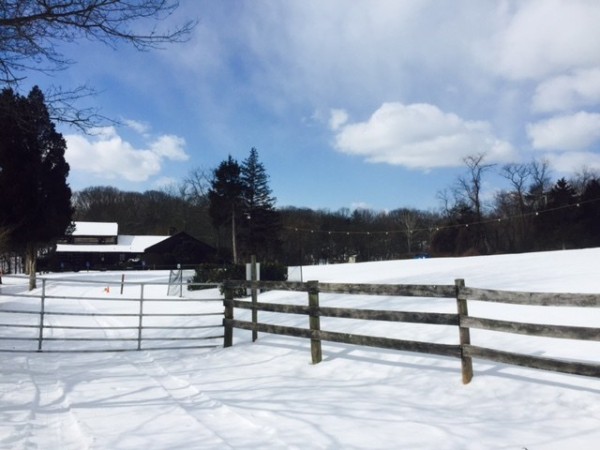 This is an opinion column by Del. Ken Plum (D), who represents Reston in Virginia’s House of Delegates. It does not reflect the opinion of Reston Now.
This is an opinion column by Del. Ken Plum (D), who represents Reston in Virginia’s House of Delegates. It does not reflect the opinion of Reston Now.
A tradition in the House of Delegates that has come about in recent years is to have a speech at the beginning of each daily session during February about a Black person. Some speeches are about well-known historic figures; most are about lesser-known Black persons who have made contributions to their communities and to the state. After all, the point of Black History Month is to have all of us gain a greater knowledge and appreciation of Black persons’ contributions to our history. The Legislative Black Caucus organizes the event, and I am pleased to have been invited to speak each year at one of the daily sessions. This year I spoke about the late Gwen Ifill of PBS NewsHour and Washington Week in Review who was the first Black woman to become a national news commentator. I always appreciated receiving the daily news from her in her calm and professional manner. Not all speeches are about historic figures; one delegate spoke this year about his experiences of growing up Black.
I predict that in future years a speech will be made on the floor of the House of Delegates about the 2020 Virginia General Assembly being a transformative event in Black history. Black experience accounts for a major portion of the story in a state that unfortunately has been known for centuries for its racist policies. The first enslaved Africans were brought to Virginia in 1619, and the slave codes that were enacted to keep them subjected as slaves were inhumane.
When the tobacco fields were no longer productive, Virginia’s chief source of income became the selling of slaves into the deep South. Even the freeing of the slaves with the Civil War did not bring equal rights to Virginia’s Black population. Slave codes were replaced by Jim Crow laws. Voting by Blacks was restricted. Their separate schools and other accommodations were not equal.
Supreme Court decisions and the Civil Rights Act of 1964 and the Voting Rights Act of 1965 brought about changes that started Black people on the way to greater freedom. A successful lawsuit against gerrymandering in the state along with greater voter participation brought about a record number of Black candidates being elected to the General Assembly. Black legislators took on greater roles of responsibility in the 2020 session of the legislature.
The first Black woman was elected Majority Leader of the House of Delegates, and the first Black woman was elected President of the State Senate. While there had been a few Black committee chairs over the years in the House of Delegates, half of the fourteen committee chairs are now Black. Vestiges of Jim Crow laws that remained in the Code even though they had been over-turned by the courts are being stripped away. Localities are being given permission to deal with Confederate monuments that were the symbols of Jim Crowism.
Laws that were unevenly applied to Black persons are being amended or repealed. Black cemeteries are being cared for as the Confederate cemeteries were for many years. A commission is going to look at the teaching of Black history in our schools to ensure that it tells the whole story. Major strides are being made in this month of Black history!
File photo
Local history lovers can learn more about their community with an upcoming event at the Reston Museum.
“The Reston Story — Case Exhibit” (1639 Washington Plaza) invites people to check out an illustrated history of Reston from 11 a.m. until 4 p.m., according to the Facebook page.
Illustrated pages offer guests the chance to see how people used to “live, work and play” in Reston, the website said.
This is exhibit is available for a limited time through the end of the month (Feb. 29), according to the website.
Tomorrow (Saturday)
- Pebble to Pearl Party at Crafthouse Reston (10 p.m.) — This live musical event at 1888 Explorer Street invites people to come and enjoy live music, which brings together a variety of groups for a comprehensive musical experience — including local artists, according to the Facebook page. Drink and food will be served on-premises.
- Candy Making Party (3-4:15 p.m.) — A candy making party at Frying Pan Farm Park (2709 W. Ox Road) welcomes people to enjoy a sweet day of historical candy making. This event includes a history demonstration lesson on a wood-burning stove. Admission is $10 and people over the age of 10 are welcome.
- Romantic Roost (7-10 p.m.) — This event at 12976 Highland Crossing Drive allows people to come and drink wine while painting. Tickets are $55 per person.
Sunday (Feb. 9)
-
Carolina Blue (7 p.m.) — Frying Pan Farm Park (2739 W. Ox Road) is hosting a bluegrass concert from an award-winning group. This event is free and open to the public.
Image via The Reston Museum/Facebook

Meeting on Local Department of Historic Resources Survey Set for Next Week — A pubic information session on state preservationists’ efforts to study Reston this fall and wanter is set for Dec. 17 at 7 p.m. The project is being managed by the Virginia Department of Historic Resources. [Fairfax County Government]
Metro Cancels Summer 2020 Shutdown — “Metro is canceling a planned Green and Yellow Line shutdown next summer that the agency had announced in 2018, WTOP has learned. Internal Metro documents suggest that when Metro announced the shutdown plans, Metro did not fully understand the scope and cost of additional work at Greenbelt, College Park, Prince George’s Plaza and West Hyattsville stations, so any significant repairs to crumbling platforms could be delayed several years.” [WTOP]
Staff photo by Jay Westcot
Reston will participate in an upcoming statewide survey to identify the community’s cultural and historic resources.
The program — which is called the Virginia Department of Historic Resources’ Survey — is intended to identify the cultural and historical traits of local buildings built from 1961 to 1978 in order to add them to the National Register of Historic Places and Inventory of Historic Sites, according to Fairfax County.
The process will begin with a meeting on Dec. 17 at the Reston Community Center Lake Anne (1609-N Washington Plaza) around 7 p.m. Anyone is welcome to attend this public meeting.
The survey will exclude the Lake Anne Village Center since it was already listed on the National Register of Historic Places and the Virginia Landmarks Register in 2017.
When the project is completed, findings are expected to include a map and photos of all the buildings surveyed.
Photo via Fairfax County
The author of “Hidden History of Herndon” will speak in Reston next month.
Barbara Glakas will be at the Jo Ann Rose Gallery (1609-A Washington Plaza N.) to discuss her book and answer questions from the audience on Nov. 13 from 7-9 p.m.
The event will be hosted by the Reston Historic Trust and Museum, which aims to foster community engagement and knowledge of local history.
This event is free and will cover a range of Herndon and Reston history from her book that features “firsthand accounts to tell little-known stories of the people, places and events that shaped the history of the Town of Herndon,” according to a press release.
Photo courtesy Reston Historic Trust and Museum
A former landfill used by the CIA and the Russian embassy near Great Falls is looking to push past its complicated history and become protected agricultural land.
The current owners of Lockmoor farm (802 Utterback Store Road) went before the Fairfax County Planning Commission on Thursday (Oct. 2) to request that the county label the farm as an agricultural district — ultimately giving the owners a tax break as long as they do not develop the land. They plan to add goats, sheep, bees and possibly a vineyard to the property.
The landfill was in use from 1970 until 1989 and served as a place to dump old tree stumps, earning it the nickname “Stump Dump,” as well as a dumping ground for waste from the CIA and certain foreign embassies, according to a Fairfax County report.
Both the CIA and the Russian embassy used to dump garbage there.
“The Russians arrived every few months, paying the dump fee in cash or bottles of vodka,” according to the Washington Post. “A landfill employee would then call the FBI, whose agents would soon arrive to paw through the discards, usually restaurant receipts and parking tickets but once a stripped-down, brand-new Russian car.”
The almost 69 acres of land was also once a zoo with giraffes, zebras, kangaroos, gazelles, buffalos and other non-carnivorous creatures, according to Fairfax planners. The previous owner also wanted to bring lions and bears to the property, but Fairfax County wouldn’t allow it, Peter Murphy, the chairman of the Planning Commission, said.
Evidence of the zoo can still be seen from underground enclosures at the base of the hill on the property.
Despite previous uses, the Virginia Department of Environmental Quality determined that the land is fit for agricultural use because the soil and water meet safety and health requirements. VDEQ stopped monitoring the area in 2016 and now requests that the current owners maintain the landfill cap, which sits on the top of the hill.
Partners John Nguyen and Hanna Chakarji bought the land two years ago in pursuit of their lifelong dream of farm ownership, Chakarji told the Planning Commission.
“When the opportunity presented itself to purchase this property, we jumped, we grabbed it and have no intention of developing it,” Chakarji said. “We want to keep it in its present state, which is beautiful.”
The land is now divided into five parcels. Onlookers can spot the growing Tysons skyline in the background of the property, as the farm sits on one of the highest points in Fairfax County.
Currently, the men own several cows and ducks, 20 chickens and 49 goats. They sell the goats to local restaurants in D.C. and produce more than 1,000 pounds of tomatoes, which they donate to local churches, according to county documents.
Chakarji said their top priority is to integrate the sheep and bees, saying they understand that a vineyard and winery would take time.
“The winery is an afterthought, I’m sure it will take a lot of zoning,” he said, adding that his top priority is to preserve the farmland for his family.
After an extensive discussion about goats, the Planning Commission recommended approval of the agricultural district proposal, which now heads to the Board of Supervisors next week.
“This was probably the most interesting agriculture and foresting districting we’ve had in a long time,” Murphy said.
Images via Fairfax County
State Sen. Janet Howell (D-32nd) and her daughter-in-law are set to celebrate the release of their new book about women leaders this weekend in Reston.
Howell and Theresa Howell, the authors of “Leading the Way: Women in Power!,” will be at Scrawl Books (11911 Freedom Drive) from 2-3:30 p.m. on Sunday (Oct. 13) where they will discuss the 50 women profiled in the book and host a discussion with the audience.
The book examines the ways outstanding women throughout history have contributed to American society, according to Scrawl Books.
“This engaging and wide-ranging collection of biographies highlights the actions, struggles, and accomplishments of more than 50 of the most influential leaders in American political history — leaders who have stood up, blazed trails and led the way,” according to Scrawl Books.
Howell is a record-breaking woman herself — she is the longest-serving female legislator in Virginia, according to Scrawl’s website. She has been a senator since 1992 and a civil rights advocate since her college years.
Howell, who lives in Colorado, is an author and previously published “Maybe Something Beautiful.”
This free event is open to all ages. People can pre-order a hardcover copy for $24.
Image via Scrawl Books
 This is an opinion column by Del. Ken Plum (D), who represents Reston in Virginia’s House of Delegates. It does not reflect the opinion of Reston Now.
This is an opinion column by Del. Ken Plum (D), who represents Reston in Virginia’s House of Delegates. It does not reflect the opinion of Reston Now.
Four hundred years ago yesterday, July 30, 1619, a group of 22 colonists met in the wooden and mud church on Jamestowne Island as instructed by the investors of the colony “to establish one equal and uniform government over all Virginia” and to provide “just laws for the happy guiding and governing of the people there inhabiting.” They adjourned on August 4. That event is variously described as the beginning of representative government in America and as the beginning of the oldest continuous law-making body in the western hemisphere. It merits the commemoration it is receiving.
In order to fully understand the importance of a signature event as this one, I believe it is important to put it into perspective as our knowledge of what happened afterwards allows us to do. While termed the beginning of representative government, the first legislative meeting was anything but representative. Only white males could vote or serve in the Assembly. The indigenous people — called Indians because one of the purposes of sailing to this new world was to find a shorter route to India — were not able to participate even though they had inhabited the land for at least 15,000 years. Not only were they kept out of the Assembly, they were forced off their lands where they had their homes, governance, religion, and farms. In less than a half century the immigrants had taken over the land and displaced the indigenous people.
Nor could women take part in that first Assembly because they did not arrive in Virginia until 1619 and did not secure the vote until three centuries later! Enslaved people from Africa did not arrive in the colony until 1619 and not only were they not in the First Assembly but they were the subject of laws in subsequent sessions of oppressive slave codes that denied them basic human rights. It was necessary in the beginnings of the Assembly to belong to and pay taxes to the established church.
The history of Virginia and of America has been to move from this humble beginning and through decades and centuries of events to evolve into what is more closely a representative government. The planners of the events surrounding 1619 have correctly I believe termed it “evolution.” Contrary to what some may have us believe, our state and our country did not start out meeting the ideals and vision that we have. We have built on a humble beginning to evolve into the country we are today.
I trust that this important celebration will not be allowed to be taken over by an ignorance of what happened at Jamestowne and turned into a biased partisan view to justify the terrible actions of government today against people of color, people from other lands, and people in the LGBTQ communities. We do not need to try to return to a past that was much more imperfect than we sometimes care to admit. I am attending the Commemorative Session of the General Assembly to learn more about the past and how we can learn from our experiences and evolve further into a more perfect union. I will not be attending the session with POTUS.
In what’s become a familiar theme in Reston, the owner of a three-story office building on Old Reston Avenue wants to redevelop the 1980s structure into two three-story office buildings and a “campus-style’ setting.
The redevelopment project, which is located at 1856 Old Reston Avenue, is guided by the principles of “strength, dedication and permanence,” according to an application by the developer. The 5.2-acre site is also home to the historic A. Smith Bowman Manor House, which was built in 1899 and is listed on the Fairfax County Inventory of Historic Sites.
The proposal by AP Reston Campus LLC, a subsidiary of the American Armed Forces Mutual Aid Association, is in its early stages. The county accepted the application for review earlier this month. AAFMAA bought the property in 2009 and has occupied it since 2010.
AAFMA said renovating the existing office buildings requires major capital investment, which is not feasible.
“Rather than continuing to invest in a 30 year old building, AAFMA anticipates a greater return on its investment by meeting market demand for modern, iconic, campus-oriented office buildings in close proximity to Reston Town Center,” according to the Feb. 19 application.
The company will preserve the manor house, a gazebo, pond and wall along Old Reston Avenue. A new landscaped garden is proposed behind the manor house.
A 45,000-square-foot office building is proposed on the north end of the property and a 94,000-square-foot office is proposing on the southern end. Both structures will be connected by an underground parking garage and shared conference facility. A 6,600-square-foot rooftop terrace will also run between the two buildings.
AAFMA said it is working with DBI Architects, Inc. to create a “innovative, sustainable, cutting -edge architectural statement along Old Reston Avenue,” according to the application. It hopes the new campus setting is an attractive backdrop to the Manor House.
The latest plan departs from the previously approved Boxwoods project, which would have brought 60 residential units to the site and converted the Manor House into a six-room hotel. The developer dropped those plans in 2009 to continue using existing office space on the site.
The Reston Planning and Zoning Committee will review the project tonight.
A legal representative for AAFMAA did not return a request for comment. A map of the proposed location is below.
Photo via Google Maps
For the final Reston Then and Now — a series where we’ve used Fairfax County’s aerial photography to track changes in the area — we’re looking at the area overall and at how far it’s come since its founding.
Reston was founded in 1964, but some of the paths that are roads today — like Baron Cameron Avenue — are still visible in photography from 1937. Reston’s iconic man-made lakes are also absent, leaving most of the area that’s Reston today just open fields.
By 1976 though — 10 years after Reston was founded — the region was starting to take shape in the neighborhoods around Lake Anne and Lake Thoreau. The village design envisioned by founder Robert E. Simon is still apparent in those early aerial photographs showing retail and residential areas clumped together.
But over the years, those isolated communities start to become increasingly interconnected to the point of being almost indistinguishable from above. By the mid-1990s, the only major patch of green space around Reston is Colvin Run near Lake Fairfax and southeast of Lake Anne.
After the Reston Town Center starts showing up in aerial photography in 1990 (construction began in 1988) the development starts to shift west of the original area and more toward major transit routes.
In the photography from 1990, construction also starts to bunch around the Dulles Toll Road in the Reston Station neighborhood. The Toll Road was built in 1982, and by the early 2000s, the urban centers of Reston shift away from the villages to the north and south and more towards the developments along the major highway. This density starts to ramp up in 2011 as the area builds up for the Silver Line’s opening in 2014.
The density continuing to focus around the Silver Line is poised to continue as developers plan new mixed-use buildings near Woodland Park by the planned Herndon Silver Line Metro station.
The Reston Then and Now series is going back to where we started for our penultimate episode: Lake Anne Plaza.
Anyone flicking through the photos overhead — taken from Fairfax County’s Historic Imagery Viewer — might have noticed that very little has changed at the plaza itself over the years.
But as the Lakeside Pharmacy icons show, there’s been plenty of changes in tenants and aesthetics over the years. While he’s somewhat dismissive of them as historic relics, Wayne Schiffelbein, a local artist and architect who once repainted and fixed up the icons at the owner’s request, said the icons and the damages to them tell the story of earlier unease between Reston and Herndon.
“We had people that lived in and around Herndon who did not take kindly to Reston being there, especially ‘northern folk’, like Jews and Blacks being there,” said Schiffelbein. “The people [in Reston] had college degrees. Not only were the houses more expensive, but they were driving better cars, and people knew that.”
Back in the 1960s, as Reston was first getting started, Schiffelbein said there was a lot of tension between Restonians and Herndon residents who would come into areas like Lake Anne Plaza and cause trouble.
Schiffelbein remembered summers where kids from Herndon would come over to his house by Lake Anne, climb onto the roof and jump out into the lake. Not exactly a campaign of terror, but Schiffelbein said the Reston residents were annoyed by the constant footfalls on the roof.
It was during these early years of class-tension that Schiffelbein said the drug store icons obtained the damages some of them still show.
“They discovered they could carry a sheath knife around,” Schiffelbein said. “The drug store had… soft wood. So the knifes would stick. There were tables in front of the drug store where you could have sat and had coffee while playing chess. They would throw their knives at the walls. It took a couple years, but it took chunks out of pieces of wood from the backing and pieces that were there. Toothbrush took a bunch of hits. Comb didn’t do much better. They dinged the bandaid.”
But it was Vietnam that partially put an end to the local turmoil, with many of the young men from Herndon swept up by the draft.
“Tensions with Reston and Herndon went down over time,” Schiffelbein. “Some of the Herndonites were drafted and some of them just grew up, and we’ll leave it at that. It’s something you do as a 15- and 16-year-old is not as appealing when you’re 22.”
In the 1990s, Schiffelbein said he was contracted to repaint and fix the icons after years of neglect.
“If I squint, it’s a flashback to the drugstore,” Schiffelbein said. “It was a real drugstore. It had a counter, some seats at the counter. It was old fashioned drug store. It was very nice. It was small, everybody knew everybody. But as the community grew that ebbed away.”
In the early days of the pharmacy, Schiffelbein said it catered mainly to the older residents at the Lake Anne Fellowship House.
“The older people used a lot of prescription drugs and that was before insurance companies required you to go to their pharmacy,” Schiffelbein said. “In the early years, they would amble across the road and fill 50 or 60 scripts a day. There was a stream of people going into the drug store. A lot of New Yorkers and New Jerseyites moved to Reston in the early years. There was an old man there who played the races. The owner got racing forms every year. I remember that as clear as a bell, I can still see the man’s face.”
The Reston Historic Trust and Museum currently has a GoFundMe set up to preserve the icons, but it’s not going particularly well.
For more Reston Then and Now, check out these earlier stories and come back next week for final Then and Now:
This week on Then and Now, we’re going back to South Lakes to take a look at Lake Audubon.
With help from Fairfax County’s Historic Imagery Viewer, which offers aerial views of the county dating back to 1937, Reston Now has put together a look at how the lake has evolved from overhead and under the surface.
Audubon is the largest of Reston’s lakes in both it’s acreage — 43.5 acres — and it’s extensive watershed covering 1,558.5 acres.
While Lake Thoreau holds 26.5 million gallons of water, it’s southern twin holds 133.6 million gallons.
Lake Audubon and Lake Thoreau were conceived to be one lake, then named Lake Elsa. The lake was impounded in 1971 and was named for Reston founder Robert Simon’s mother.
But in 1979 the South Lakes dam bisected the property and split the lake, creating Lake Thoreau in the North and Lake Audubon in the south.
For years, the southern area closed off by the dam, but for years afterwards remained a dry pit. During the 1980s, the lake was filled in with water.
But while the lake shows very little change from above between 1997 and 2017, there were plenty of changes taking place beneath the water’s surface. In those years, several new species of aquatic wildlife was introduced to the lake, including:
- Redear Sunfish
- Black Crappie
- Brown Bullhead
- American Eel
In more recent years, the levels of contamination in the water continue to be a problem, caused in large part by the lake’s large surface area. According to a 2017 report on Reston’s lakes, Lake Audubon’s has faced increasing amounts of toxic algae that pose an ecological threat to the lake.
Increasing levels of toxic algae culminated with a warning to local residents to avoid contact with the lake, leading to a dredging project earlier this year.
For more Reston Then and Now, check out:
In a hunt for good local reads, Reston Now has recently been reaching out to Reston and Herndon book stores for book suggestions about local history or written by local authors.
Reston’s Used Book Shop weighed in with its top local picks for book lovers — all of which can be found on the shop’s shelves at 1623 Washington Plaza.
The book shop has called Lake Anne Plaza home for more than 40 years. Founded in 1978 by Restonians Sue Schram and Sue Wensell, the book shop changed owners in 1999, according to its website.
Readers looking to unearth Reston’s secrets might enjoy the shop’s recommendation of “Myths and Monsters of Reston, Virginia: The Phenomenal and Frightening Findings of Dr. Padraigin W. Thalmeus, PDS.” written by local authors Eric Macdicken and Kristina Alcorn.
Reston’s Used Book Shop provided this book description:
Every town has myths, but not every town has monsters. Reston, Virginia could be the most monstered town in all the world! At least according to the recently unearthed journal of the scholarly yet skittish Dr. Padraigin W. Thalmeus, PDS., circa 1819. Join our team of modern day paranormal researchers as we discover the supernatural creatures that Dr. Thalmeus faced on his perilous quest for a legendary hidden treasure. Perhaps these myths and monsters are still haunting to this day!
Reston’s Used Book Shop had two more suggestions that Reston Now covered in previous bookstore roundups.
The book shop suggested another book by Alcorn — “In His Own Words” — that was previously recommended to Reston Now by the Reston Historic Trust and Museum (Alcorn is the vice-chair of the Reston Historic Trust’s board).
The shop also selected “Reston A to Z” by Watt Hamlett, which was recommended by Mascot Books to Reston Now.
Tell us in the comments if you’ve read these or have other local reading suggestions for book lovers.
Photo courtesy Reston’s Used Book Shop
A little over four years ago, residents of the Hunt Club Cluster near Lake Fairfax rallied to have a possible slave cemetery recognized to stave off potential development.
But what’s happened in the years since then?
In short: not much.
“The short answer is that we don’t have any additional information, including whether this was a slave cemetery,” Brian Worthy, a public information officer for Fairfax County government said in an email. “As far as I know, there are no preservation protections in place, and there no redevelopment proposals for this location.”
County records say the story of the potential cemetery is tied with that of Mildred Johnson, the matriarch of a prominent local family of Union loyalists. The Johnson family owned hundreds of acres of farmland in Fairfax, with one son fighting for the Union and Mildred Johnson herself sewing sacks for Union soldiers.
The Johnsons owned slaves, including one female slave held by the family for 20 years, and a plot of land 200 yards north of the log clubhouse is reported to have been the slave burial ground.
But while there’s no official recognition of the site as a slave cemetery, Worthy said the area is recognized in county documents as some kind of unmarked cemetery and thus would require study prior to redevelopment.
“The adopted Reston Master Plan acknowledges this unmarked cemetery,” Worthy said. “It states that any required surveys and studies should conducted if this site is planned for redevelopment, and the Master Plan recommends the cemetery be preserved. The county wouldn’t conduct any studies or survey unless there’s a development proposal on the table.”
File photo
Most of the new developments around town profiled by Reston Then and Now are village centers with new residents cropping up around them over time, but North Point Village Center is a little different.
Fairfax County’s Historic Imagery Viewer shows how the village grew first with the center being placed later at it’s heart — filling in Reston’s northern frontier.
Not including the Reston Town Center, North Point was the last of Reston’s village centers. In the 1960s, while the other villages were under construction, North Point was a sweeping expanse of untamed wilderness.
Construction on North Point Village started in 1982, and in 1993 the North Point Village Center opened to the public.
The area has changed very little from overhead since 2002, but there’s plenty of turnover on the ground. In December Koko FitClub closed, and a new Thai restaurant opened two months later down the street.
A Reston Now poll earlier this year ranked North Point Village Center as Reston’s second favorite, behind Lake Anne.


